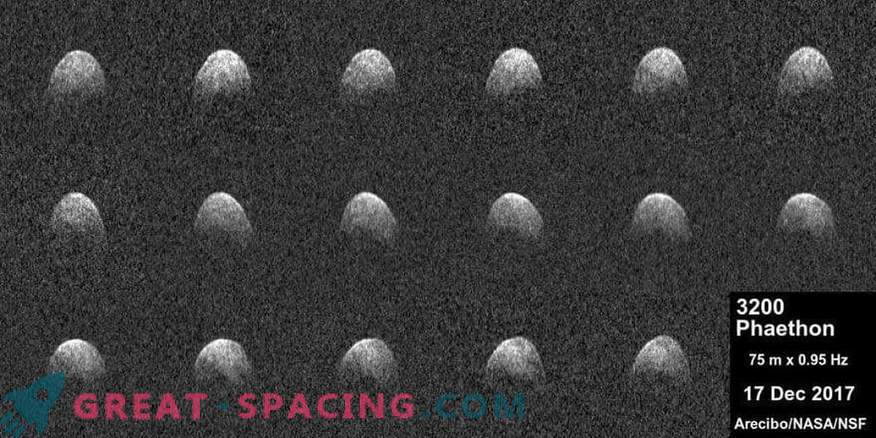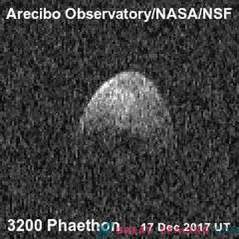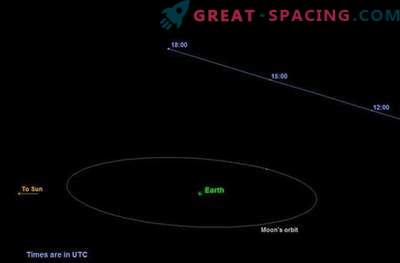
These are the radar images of the 3200 Phaeton near-Earth asteroid taken by the Arecibo Observatory on December 17, 2017. The survey behind the object was carried out on October 15-19, and the moment of the nearest approach fell on December 16 at a distance of 1.8 million km
The Arecibo planetary radar was able to provide images of the asteroid 3200 Phaeton with the largest expansion. You can see that the object has a spheroidal shape and a large concavity, extending to several hundred meters in width. Radar images are captured with a resolution of 75 m per pixel.
New observations show that an asteroid can resemble Benna, but be 10 times larger. A dark formation can be a crater or some other topographic depression that does not strike a radar beam.
The analysis shows that the diameter of the Phaeton is approximately 6 km (1 km more than previous estimates). Also stands in second place among near-Earth asteroids and is considered potentially dangerous.

The Arecibo Observatory is the most powerful astronomical radar system on Earth. September 20, the telescope was shocked by the strongest hurricane Maria. A few days after the storm, the telescope returned to radio astronomy observations, and surveys requiring more power were resumed only in early December.
The asteroid Phaeton was found on October 11, 1983 with an IRAS IR satellite. Observations at the Arecibo Observatory were conducted on October 15-19, 2017. The nearest flight to Earth occurred on December 16 at a distance of 1.8 million km. This is the closest meeting until 2093.
The radar was used to survey hundreds of asteroids. When these rocks approach our planet, the tool allows you to study their parameters, rotation, surface features and orbital path. The Arecibo Program is fully funded by NASA. The US planetary defense is responsible for finding, tracking and describing potentially dangerous objects.











































